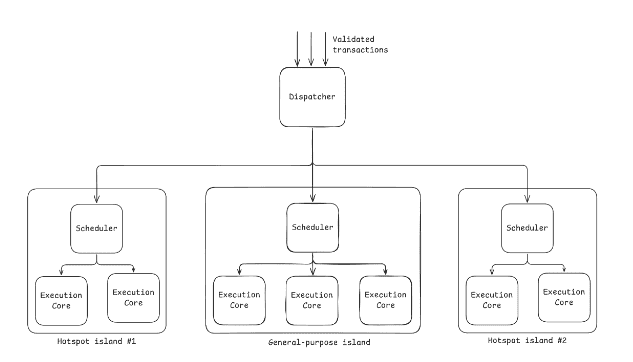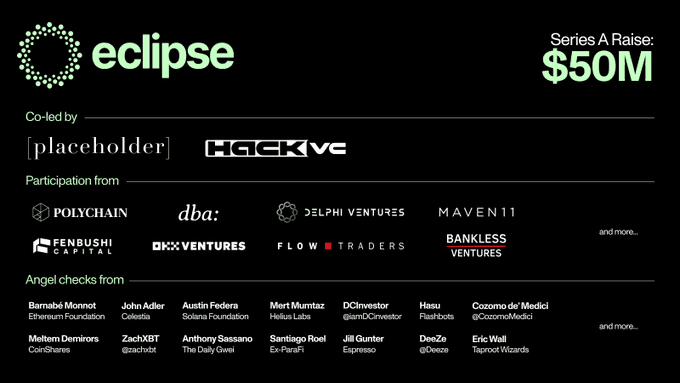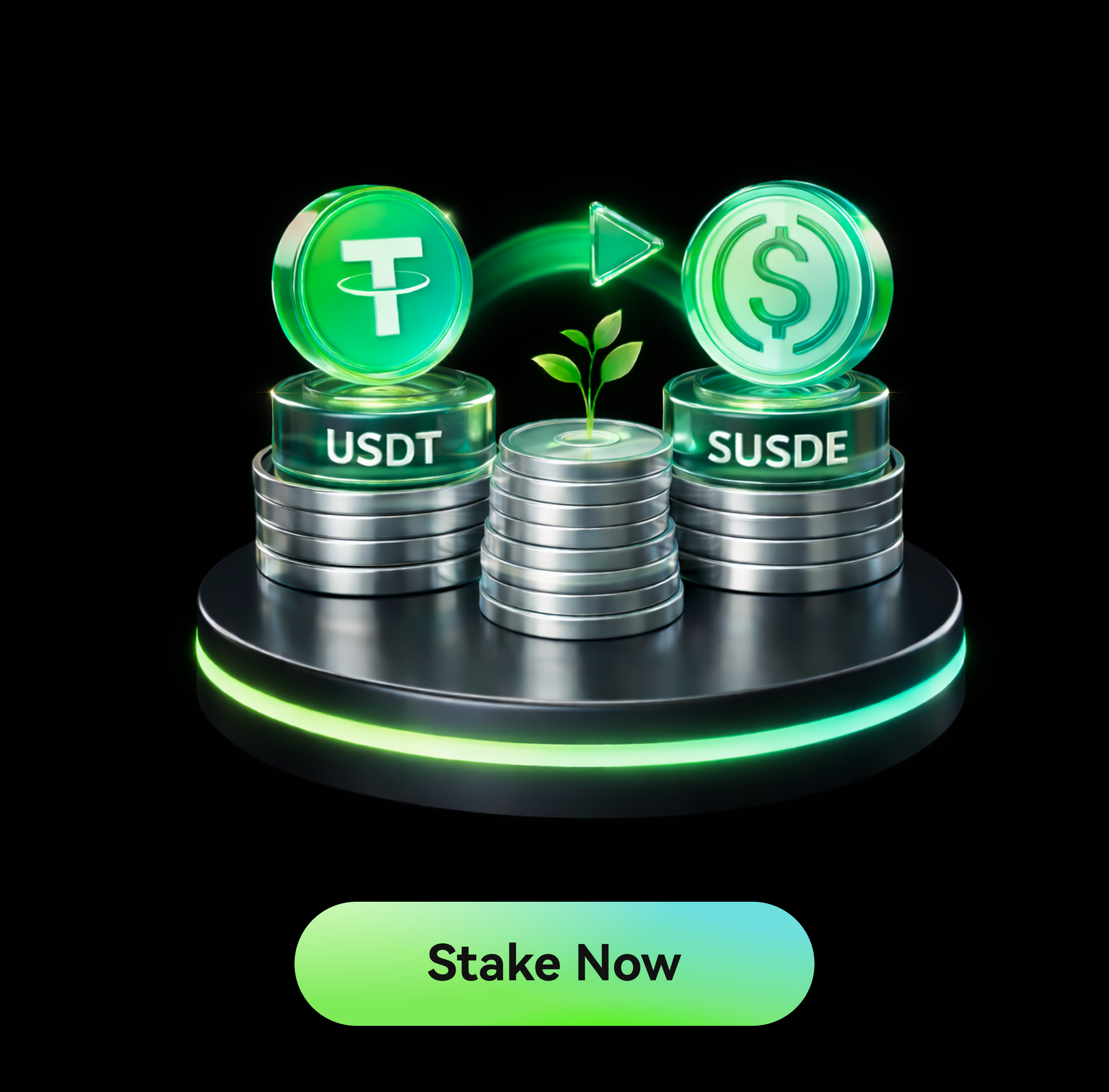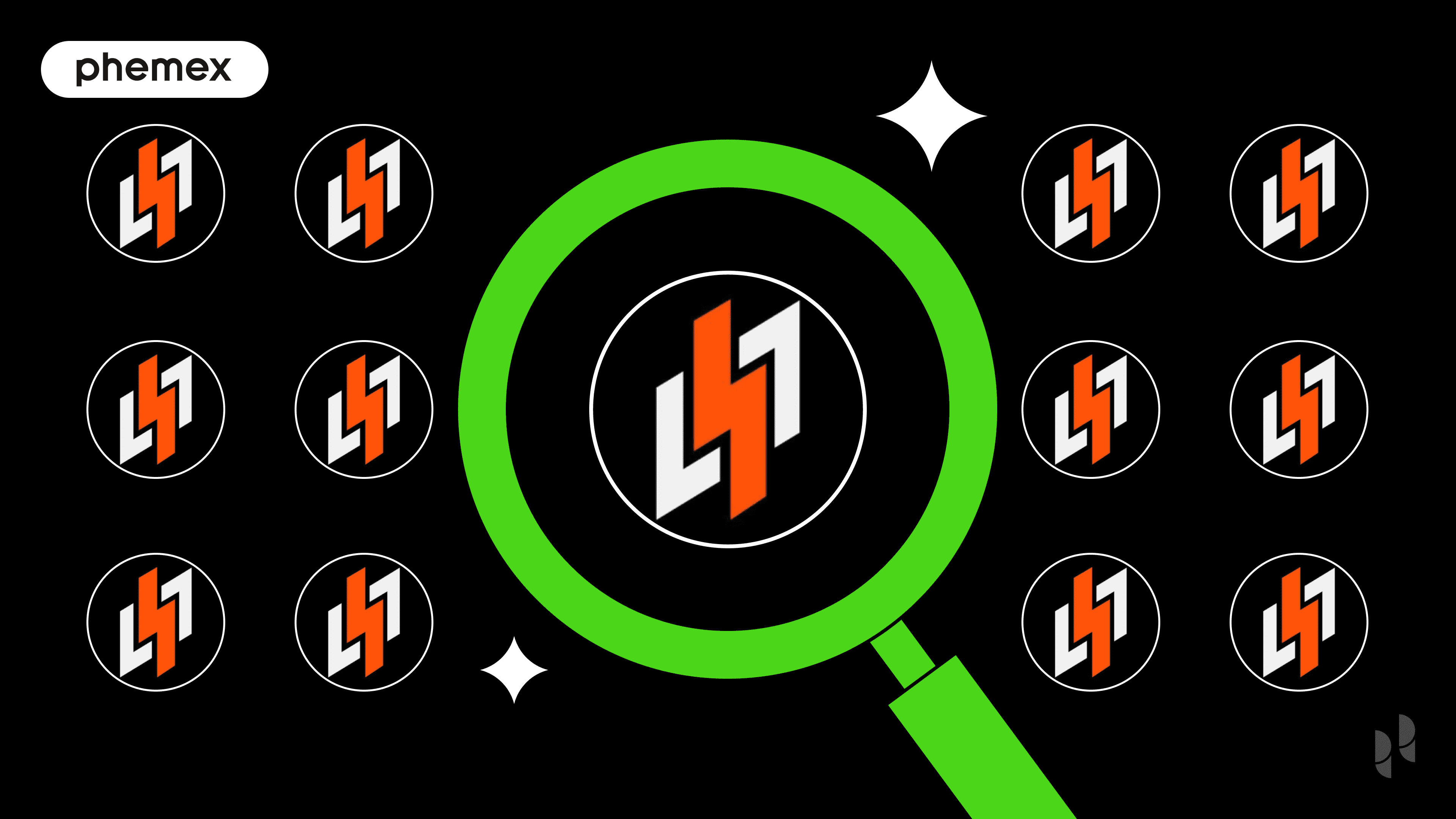The world of blockchain is in a constant race for scalability, and a new frontrunner has emerged, backed by the heaviest hitters in both crypto and traditional finance. Enter Eclipse (ES), a groundbreaking Layer 2 platform that promises to deliver the hyper-speed of Solana with the unshakeable security and liquidity of Ethereum. With a world-class team, a recent $50 million fundraise at a $1 billion valuation, and a rapidly growing ecosystem, Eclipse is not just another L2—it's being hailed as Ethereum's potential new savior.
This deep dive will explore everything you need to know about Eclipse: its powerhouse leadership, its revolutionary GigaScale Virtual Machine (GSVM) technology, its impressive mainnet performance, and why it stands out as one of the most anticipated projects of the year.
Eclipse (ES): Key Facts at a Glance
-
Ticker Symbol: ES
-
Chain: Ethereum
-
Contract Address: 0x6055Dc6Ff1077eebe5e6D2BA1a1f53d7Ef8430dE
-
Circulating Supply: To be determined at Token Generation Event (TGE)
-
Total Supply: 1,000,000,000 (1 Billion)
-
Primary Use Case: Gas token, governance, and sequencer staking for the Eclipse network.
-
Current Market Cap: To be determined post-launch
-
Availability on Phemex: The new spot trading pair ES/USDT will be listed at 10:10 UTC on July 16, 2025.
What Is Eclipse? The Autobahn on Ethereum's Main Street
So, what is Eclipse (ES)? At its core, Eclipse is the first SVM (Solana Virtual Machine) chain deployed as a Layer 2 on Ethereum. Its primary mission is to solve the classic blockchain trilemma by offering a single, robust environment for developers.
An Eclipse explained simply is this: it's a supercharged lane for Ethereum traffic. While most L2s copy Ethereum’s entire rulebook (the Ethereum Virtual Machine or EVM), Eclipse takes a different path. It creates a unique "modular" blockchain by combining the best components from different ecosystems. To understand this, use this powerful analogy:
-
Imagine Ethereum is a historic, bustling city's main street. It's incredibly secure, and everyone wants to be there, but traffic is slow, has strict rules, and tolls (gas fees) are expensive.
-
Imagine Solana is a wide-open German Autobahn. It's built for speed, with multiple parallel lanes and very low fees.
-
Eclipse is a multi-lane superhighway built directly on top of the city's main street. You get the blistering speed of the Autobahn, but every on-ramp and off-ramp is securely anchored to the trusted main street below.
This hybrid model allows developers to build dApps that can handle massive user loads without sacrificing the security and access to liquidity that only Ethereum can provide. It's designed for the modern "App Era" of blockchain, where performance is no longer a luxury but a necessity.
Tokenomics: The ES Token Supply and Distribution
The tokenomics of a project are fundamental to its long-term viability and sustainability. For Eclipse, the native token is ES, which is designed with a fixed total supply of 1 billion tokens. This hard cap ensures that the token is not inflationary, creating a predictable economic model where scarcity can increase as network demand grows.
The initial circulating supply will be determined at the Token Generation Event (TGE). A significant portion of the total supply will be locked up for the team and early investors under vesting schedules, a common practice to align long-term interests with the health of the project. While not yet confirmed, the protocol could implement deflationary mechanisms, such as burning a portion of transaction fees paid in ES. Any burning mechanism would create deflationary pressure, potentially increasing the token's scarcity and value as network usage grows.
The Utility of ES: What Does the Eclipse Token Do?
The ES token is not just a speculative asset; it is the economic lifeblood of the Eclipse ecosystem. It is designed with several critical functions that ensure the network's operation, security, and decentralization. The primary ES use case categories are:
-
Gas and Transaction Fees: The most fundamental utility of ES is to serve as the network's gas token. Just as you need ETH to pay for transactions on Ethereum, users and developers will need ES to pay for computations, smart contract deployments, and asset transfers on the Eclipse network. This creates a constant, organic demand for the token directly tied to network activity.
-
Governance: ES token holders will be empowered to participate in the governance of the Eclipse protocol. This means they can propose and vote on key decisions, such as protocol upgrades, changes to the fee structure, and the allocation of ecosystem funds.
-
Decentralizing the Sequencer: In a Layer 2 rollup, a "sequencer" is responsible for ordering and bundling transactions before submitting them to the main chain. Eclipse plans to decentralize this role by implementing a system where operators can stake ES tokens to become a sequencer. In return for their service of securing the network, these stakers will earn a share of the transaction fees, creating a powerful economic incentive.
Eclipse (ES) vs. Ethereum
While Eclipse is built on Ethereum, it's designed to offer a radically different user and developer experience. Comparing it directly to the Ethereum L1 highlights the problem it solves and its unique value proposition.
| Feature | Eclipse (ES) | Ethereum (ETH) |
| Technology | Modular Layer 2: Uses SVM for execution, Celestia for data availability, and Ethereum for settlement. | Monolithic Layer 1: Handles execution, data availability, consensus, and settlement all on-chain. |
| Transaction Speed | Very high throughput, capable of thousands of transactions per second (TPS) due to parallel processing (SVM). | Low throughput, typically 10-15 TPS, leading to network congestion during high demand. |
| Transaction Fees | Extremely low fees, fractions of a cent, enabled by the SVM and off-chain data availability via Celestia. | High and volatile gas fees, often ranging from several dollars to hundreds during peak times. |
| Primary Use Case | A high-performance execution environment for scalable dApps like DeFi, gaming, and social media. | A global settlement layer focused on ultimate security, decentralization, and storing high-value assets. |
| Developer Experience | Allows developers to build with Solana's high-performance architecture while accessing Ethereum's liquidity. | The largest and most established developer ecosystem, but constrained by the EVM's limitations. |
The Technology Behind Eclipse: Introducing the GSVM
Eclipse's technological moat is its innovative GigaScale Virtual Machine (GSVM). While traditional Ethereum L2s are limited by the EVM's sequential processing (one transaction at a time), the GSVM is designed for massive parallelization, directly competing with Solana's famous "Sealevel" runtime but implemented as an L2.
Here are the four key innovations of the GSVM, explained through our highway analogy:
-
Hardware/Software Co-design: Think of this as giving every vehicle a smart engine (GPU/FPGA acceleration) and an advanced GPS (SmartNICs). Cars automatically adjust speed based on traffic. When a massive truck (a complex smart contract) enters, a dedicated, reinforced lane opens up just for it, providing extra power to ensure it passes through quickly without slowing down the smaller cars (simple transactions).
-
Dynamic Scaling & Hotspot Isolation: During rush hour, the GSVM can dynamically add more lanes to the highway (dynamic CPU allocation). If a new, viral dApp creates a traffic jam in one area (a "hotspot"), Eclipse can isolate that traffic and provide it with dedicated resources, so it doesn't impact the flow of the entire network.

-
Cross-Layer Optimization: This ensures the highway's infrastructure is hyper-efficient. By pre-fetching transaction data, Eclipse can tell the "gas stations" to have fuel ready in advance. It uses AI-powered scheduling to predict which parts of the highway might get congested, rerouting traffic proactively.
-
Computation Abstraction & Parallelization: For extremely complex calculations, Eclipse allows them to be performed "off-highway" (off-chain). The results are then brought back to the main highway checkpoint (Ethereum), which uses a ZK-proof (like scanning a verified license plate) to instantly validate the work without having to re-do it.
This sophisticated design allows Eclipse to maximize both data security and processing efficiency, making it an ideal platform for mainstream applications.
Team & Origins: An All-Star Roster and Elite Backing
A project's credibility rests on its team, and Eclipse's leadership is arguably one of the most formidable in the entire crypto industry.
-
CEO: Vijay Chetty - A veteran of Web3 business development, Chetty was previously the Head of BD at both Uniswap and dYdX. His deep experience also includes roles at finance giant BlackRock and crypto pioneer Ripple.
-
CTO: Ben Livshits - A titan of computer science, Livshits was the VP of Research for zkSync, Chief Scientist for the Brave browser, a research scientist at Microsoft Research, and serves as a professor at Imperial College London.
This "dream team" of leadership has attracted a "dream team" of investors. Eclipse has completed three funding rounds, culminating in a recent $50 million Series A that valued the project at $1 billion. The round was led by top-tier VCs Hack VC and PolyChain Capital, with follow-on investment from Bankless Ventures, Delphi Digital, and others.

Key Developments and Project Milestones
Eclipse's journey has been marked by accelerating momentum and tangible results.
-
Unique Branding & Mascot: Eclipse has developed a strong brand identity with its memorable mascot, "Turbo the Cow." Inspired by the project's powerful "beefy sequencer," Turbo has given the technically complex project a recognizable and engaging personality, helping it stand out in a crowded market.
-
Mainnet Launch & Performance: Since launching its mainnet in November 2024, the platform has demonstrated impressive traction. As of July 16, 2025, Eclipse has generated 1,242.49 ETH in fees, attracted over 1.1 million unique wallets, and processed a staggering 22.1 billion transactions.

-
Ecosystem Growth: The platform's performance has attracted a wave of developers. To date, the Eclipse ecosystem already features over 60 dApps and service providers, spanning DeFi, gaming, and consumer applications.
-
Upcoming Listing: Phemex will list the ES token on its spot market with the ES/USDT pair at 10:10 UTC on July 16, 2025, making it accessible to a global audience.
Investment Analysis: Is Eclipse (ES) a Good Investment?
Evaluating the ES investment potential requires weighing its immense promise against the inherent risks of the crypto market.
Disclaimer: This article is for informational purposes only and should not be considered financial advice. Cryptocurrency investments are highly volatile and carry significant risk. Always conduct your own research.
The Bull Case (Potential Upsides):
-
World-Class Team: The combined experience of Vijay Chetty and Ben Livshits is nearly unparalleled. They have experience at the highest levels of both Web3 and traditional finance.
-
Elite VC Backing at a Unicorn Valuation: A $1B valuation from firms like HackVC and PolyChain signals immense institutional confidence in Eclipse's potential to capture a significant market share.
-
Proven Technology and Traction: The GSVM is not just a theory. The impressive mainnet statistics (fees, wallets, transaction count) prove that the technology works and is attracting real users and developers.
-
Strong Moat: The sophisticated, multi-faceted design of the GSVM creates a significant technological barrier to entry for competitors.
The Bear Case (Risks to Consider):
-
Intense L2 Competition: The Layer 2 space is crowded with well-funded and established players. Eclipse must continue to innovate to maintain its edge.
-
Execution Risk: While the team is stellar, scaling a blockchain to a global user base is an immense technical and operational challenge.
-
Token Volatility: As with all new token launches, the ES price will likely experience significant volatility. Investors should be prepared for sharp price movements.
How to Prepare for the (ES) Listing on Phemex
With the Eclipse token (ES) set to launch on Phemex, preparation is key for those looking to get involved from day one. By setting up your account and funding it in advance, you can ensure a smooth trading experience and be ready to trade ES as soon as it goes live. Here’s a simple guide on how to buy ES upon its listing.
-
Create and Secure Your Phemex Account: If you don't already have one, the first step is to register for a Phemex account. The process is fast and secure. Be sure to complete the identity verification (KYC) process to unlock all trading features and enhance your account security.
-
Fund Your Account: To buy ES as soon as it's listed, you'll need funds ready in your Phemex wallet. The most common trading pair for new listings is with USDT, so consider buying or depositing USDT into your account ahead of time. This will allow you to execute trades instantly without waiting for deposits to clear on launch day.
-
Stay Informed and Get Ready for Launch Events: Phemex often celebrates new token listings with special promotional events, such as trading competitions or airdrops. To be the first to know the exact listing date and participate in these events, make sure to follow the official Phemex announcements.
By preparing in advance, you can take full advantage of the opportunities presented by one of the year's most anticipated token launches. Eclipse represents a bold step forward in the quest for blockchain scalability, and its journey is one that the entire crypto industry will be watching closely.








